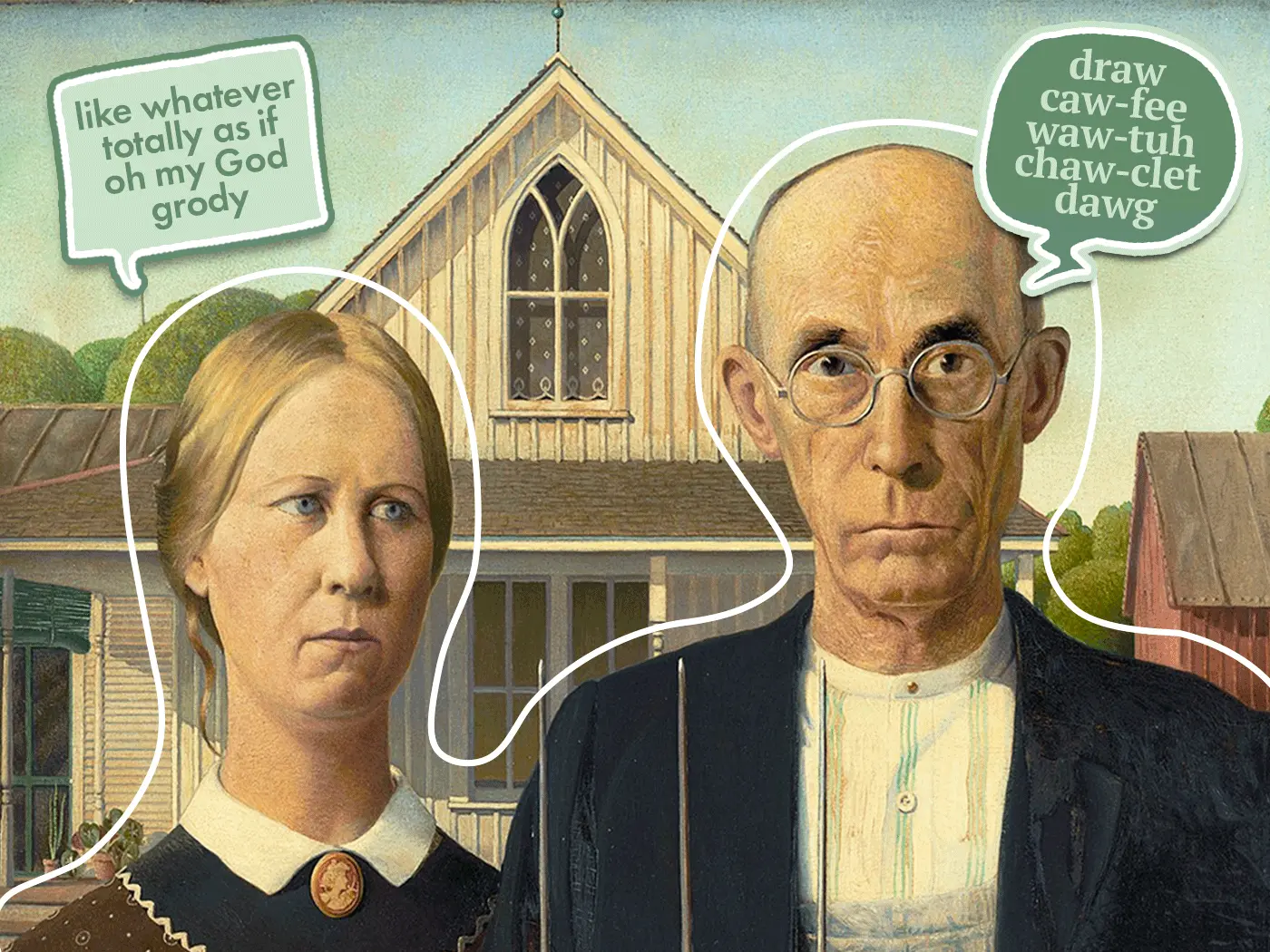European History
Police Find Ancient Teenager’s Body, Preserved in Irish Bog for 2,500 Years
Nicknamed the "Bellaghy Boy," he was likely between 13 and 17 when he died around 500 B.C.E.
This Medieval Sword Spent 1,000 Years at the Bottom of a Polish River
Construction crews stumbled upon the weapon while dredging the Vistula River in Włocławek
Millennia After Leonidas Made His Last Stand at Thermopylae, a Ragtag Band of Saboteurs Thwarted the Axis Powers in the Same Narrow Pass
A new book chronicles the 16-plus battles that took place in the Greek pass between the ancient era and World War II
Stone Age People Used This 35,000-Year-Old Woolly Mammoth Tusk Tool to Make Rope, Scientists Say
To test their hypothesis that the perforated object was a tool, researchers used a replica to create a 16-foot-long rope from cattail reeds
Archaeologists Discover a 'High-End' Blacksmith's Iron Age Workshop
Found in Oxfordshire, the "smithy" was active at the beginning of a transformative era in Britain
Humans and Neanderthals Lived Side by Side in Northern Europe 45,000 Years Ago, Study Finds
Archaeologists identified bone fragments of prehistoric modern humans in Germany, suggesting several millennia of coexistence with Neanderthals before the species disappeared
You Can Now Wear a Recreation of Scotland's Oldest Tartan
Fashion designers have created a fabric inspired by the Glen Affric tartan, which was discovered in a peat bog and dates to between 1500 and 1600
Everyone Thought This 4,000-Year-Old Tomb Had Been Destroyed. Then, an Archaeologist Found It
Billy Mag Fhloinn located the Altóir na Gréine, thought to have vanished in the 19th century, in southwest Ireland
These Paintings Reveal How the Dutch Adapted to Extreme Weather During the Little Ice Age
Artists like Pieter Bruegel the Elder and Hendrick Avercamp documented locals' resilience in the face of freezing winters and food shortages
Bodies and Treasure Found in Polish Lake Could Be Connected to Ancient Water Ritual
New research suggests the Chelmno group followed their water burials with mass deposits of bronze jewelry and artifacts
'Sensational' Medieval Armor Discovered Near a Castle in Switzerland
The rare 14th-century gauntlet is one of the best-preserved artifacts of its kind ever found in the country
Engravings on 2,000-Year-Old Knife Might Be the Oldest Runes Ever Found in Denmark
The letters on the blade read "hirila," which experts say may translate to "small sword"
Why Descendants of Holocaust Survivors Are Replicating Auschwitz Tattoos
Those who choose to put the numbers on their bodies hope the act will spark conversation about the Holocaust and pay tribute to loved ones who survived
Winston Churchill Wore False Teeth to Deliver Historic Wartime Speeches. Now, They're for Sale
The British prime minister likely acquired the custom gold-mounted dentures around the beginning of World War II
Experts Solve 'Ancient Jigsaw Puzzle' by Reassembling Roman Armor Broken Into 100 Pieces
The fragments of the brass arm guard were discovered at an ancient fort complex in Scotland over a century ago
Another Mysterious Roman Dodecahedron Has Been Unearthed in England
More than 100 such ancient artifacts have been found throughout Europe, but nobody knows what they are
Archaeologists Unearth Ancient Roman Cemetery Full of Jewelry, Coins and Clothing
Discovered north of Rome, the burial ground lies near what was once an upper-class villa
As Empires Clashed During World War I, a Global Media Industry Brought the Conflict's Horrors to the Public
An exhibition at LACMA traces the roots of modern media to the Great War, when propaganda mobilized the masses, and questions whether the brutal truths of the battlefield can ever really be communicated
A Brief History of the United States' Accents and Dialects
Migration patterns, cultural ties, geographic regions and class differences all shape speaking patterns
Ancient DNA From Eurasian Herders Sheds Light on the Origins of Multiple Sclerosis
Genetic variants linked to the risk of MS were brought to Europe during a migration around 5,000 years ago, a new study finds—and they might have helped herders survive
Page 4 of 56
:focal(712x535:713x536)/https://tf-cmsv2-smithsonianmag-media.s3.amazonaws.com/filer_public/25/7e/257e376b-f925-4478-863d-1dddec3aa82a/image_1_-_excavation_1.jpeg)
:focal(640x482:641x483)/https://tf-cmsv2-smithsonianmag-media.s3.amazonaws.com/filer_public/33/48/33480d33-e67c-40f0-b109-dffa1fb9fa11/417378841_801717088637037_1579610783025304287_n_1.jpeg)
:focal(700x527:701x528)/https://tf-cmsv2-smithsonianmag-media.s3.amazonaws.com/filer_public/c6/ca/c6ca547e-f49f-470e-84a5-69dab59e303c/thermopylae.jpg)
:focal(489x335:490x336)/https://tf-cmsv2-smithsonianmag-media.s3.amazonaws.com/filer_public/f5/0a/f50a2b28-d50e-4729-a5be-d5b250f6f39d/woolymammoth2.png)
:focal(566x423:567x424)/https://tf-cmsv2-smithsonianmag-media.s3.amazonaws.com/filer_public/48/f1/48f129f6-30c7-41cf-87a1-88280663c7da/image_1a_wit_inside_roundhouse_ai_assisted_v20_no_sparks.jpeg)
:focal(324x243:325x244)/https://tf-cmsv2-smithsonianmag-media.s3.amazonaws.com/filer_public/dc/ac/dcac5353-55e9-4314-bbb9-65dd5dad06b9/bonefragment_cropped.jpg)
:focal(3845x2600:3846x2601)/https://tf-cmsv2-smithsonianmag-media.s3.amazonaws.com/filer_public/ee/aa/eeaad46d-aa03-4607-b2cb-75be06eaa259/08_glen_affric_tartan_ar.jpg)
:focal(1087x787:1088x788)/https://tf-cmsv2-smithsonianmag-media.s3.amazonaws.com/filer_public/92/73/92735a5b-5d53-4fae-9928-86d99e3f50b5/screen_shot_2024-01-19_at_142049_4.png)
:focal(700x527:701x528)/https://tf-cmsv2-smithsonianmag-media.s3.amazonaws.com/filer_public/e0/f9/e0f94982-7367-4182-9685-447e8ae36f79/lia.jpg)
:focal(640x482:641x483)/https://tf-cmsv2-smithsonianmag-media.s3.amazonaws.com/filer_public/6c/a2/6ca22f93-1a98-4063-9f06-0f7041769334/urn_cambridgeorg_id_binary-alt_20240117101800-47642-optimisedimage-png-s0003598x23001989_fig3.jpeg)
:focal(640x482:641x483)/https://tf-cmsv2-smithsonianmag-media.s3.amazonaws.com/filer_public/c0/0c/c00cac30-bef6-414c-abe0-895307f8fe0b/copy_of_untitled_design_-_1.jpeg)
:focal(1000x752:1001x753)/https://tf-cmsv2-smithsonianmag-media.s3.amazonaws.com/filer_public/9d/5a/9d5a69d2-fa3d-4c35-85d9-4bc3fcd43919/knife.jpg)
:focal(2644x1611:2645x1612)/https://tf-cmsv2-smithsonianmag-media.s3.amazonaws.com/filer_public/2d/93/2d931cf4-d541-4f40-9449-9f1c8870691f/tattoos_13_of_21.jpg)
:focal(1411x1115:1412x1116)/https://tf-cmsv2-smithsonianmag-media.s3.amazonaws.com/filer_public/6a/97/6a976736-3821-4a4b-b9b6-ae2e1866dbf6/gettyimages-3268903.jpg)
:focal(3680x2803:3681x2804)/https://tf-cmsv2-smithsonianmag-media.s3.amazonaws.com/filer_public/8b/65/8b656603-cafd-4014-b45b-470ddced0466/brass_roman_arm_guard_second_century_discovered_at_trimontium_photo_c_duncan_mcglynn_2.jpg)
:focal(640x482:641x483)/https://tf-cmsv2-smithsonianmag-media.s3.amazonaws.com/filer_public/5b/ec/5bec3ebf-4cc4-4fd3-a525-ac82c0a78d72/img_4496_1.jpeg)
:focal(640x482:641x483)/https://tf-cmsv2-smithsonianmag-media.s3.amazonaws.com/filer_public/65/17/6517425b-0b6e-410e-8cd4-c71e79035489/dapzb5ujcdqgqpawhbqpqm_1.jpeg)
:focal(1050x830:1051x831)/https://tf-cmsv2-smithsonianmag-media.s3.amazonaws.com/filer_public/7f/6b/7f6b81ce-e2d7-4d85-a8a2-d67c6a8b719b/rsex8938_060-access.jpg)

:focal(264x201:265x202)/https://tf-cmsv2-smithsonianmag-media.s3.amazonaws.com/filer_public/4a/25/4a25d249-17b4-4c5c-8b23-d40f66aafeab/ezgif-5-3d6c8536da.jpg)